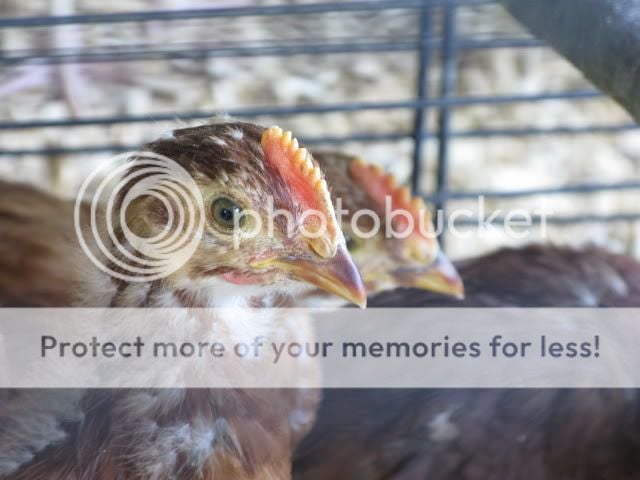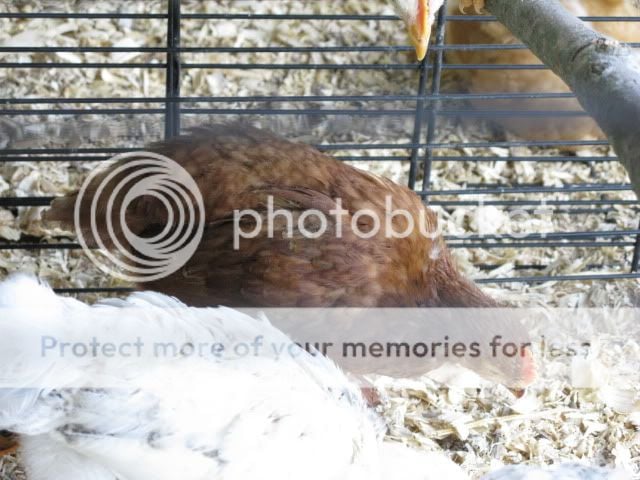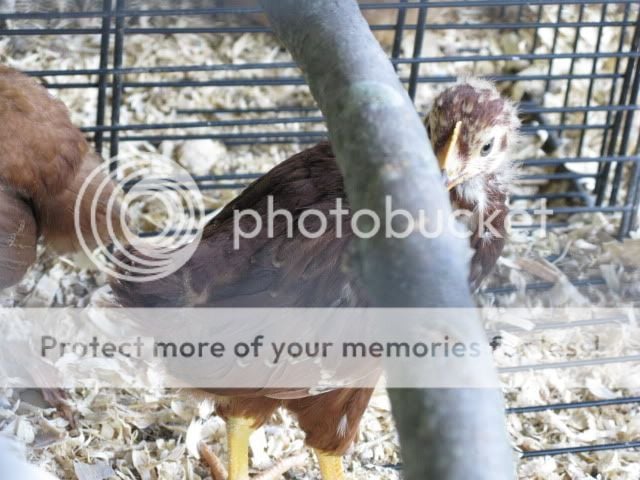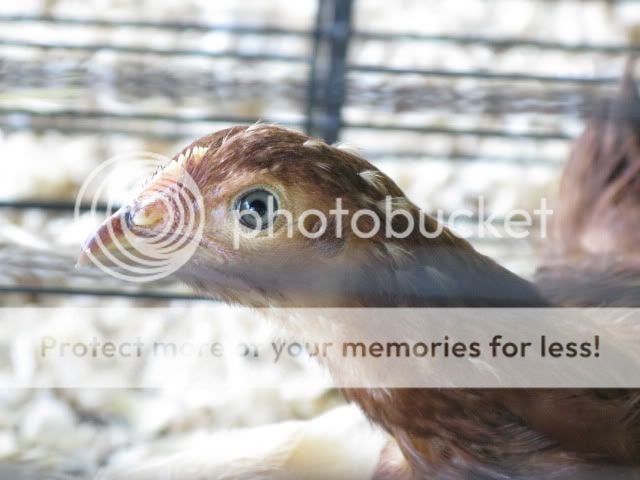I have seen hens with a comb so big that they looked just like the roo in the same yard. I have spoken to many people who have hens that "crow" like a roo. Hens can even get spurs. (I guess some of this is like when we see women with a moustache!). I have even spoken with a couple people who gave away "roos" because they were 'positive' that they were...that is until they began laying eggs for the new owner!!!
I'm not saying gristar is wrong, but the info provided is a bit problematic (IMO)...
I have six girls (3 BR, 3 RIR) from mypetcchicken.com who, like all other suppliers, guarantee a 90% accuracy rate through vent sexing.
a. Comb The cockerels comb is medium size and pinkish, the pullets is small and yellowish.
b. Legs The cockerels legs are sturdy and long, the pullets are finer and shorter.
c. Tail The cockerels tail is stumpy and curved, the pullets is longer and straight.
The problem with this is it leaves unanswered the question "compared to what?" Now, all my girls were born on the same day and have had the same diet all the way through. Yet, according to these characteristics I have a cock/pullet. Her name is Alice and she is the biggest of the three Rocks. Her legs are the same proportionately to her body but her comb is clearly pinking up and has been for the last five days or so (they are 5 1/2 weeks old). The smallest Rock has a very stumpy tail compared to the others yet the Rocks tails are notable different from the Reds.
Again, I am not criticizing gristar. What I am saying is that those points might be helpful if you are raising the same breed in a controlled setting but those characteristics seem to be far too subjective to do any good. My girls are right in the middle of that 4-6 week range and those characteristics just don't fit between the two breeds I have or even just among the Rocks.
According to HEChicken my Alice is a hen but according to UC Davis I should be thinking she is a cockrel. I have another Rock who is feathering out slower but has the smaller yellow comb.
I'll try to post some pics later to illustrate what I mean.
I am not trying to be contrary but to simply make the point that there are tons of subjective and anecdotal ways to "tell" if your bird is a roo or pullet. If i were raising fifty or one hundred Rhode Island Reds then maybe some of this stuff could help me be somewhat successful in determining sex. But, with most people (especially on this site) with small, backyard flocks of mixed breeds (with great variance and nuance) it seems to me to be far too subjective to give any degree of accuracy. Like I said earlier, I spoke with a couple people who were "sure" they had roos and gave them away because they did not want or could not have them only to find out that their "roos" began laying eggs for the new owner when they reaced the age.
In the end, if you're not trained in the art of vent sexing then there is one irrefutable way to be sure your pullet is a pullet and not a roo...wait for her to lay an egg.








